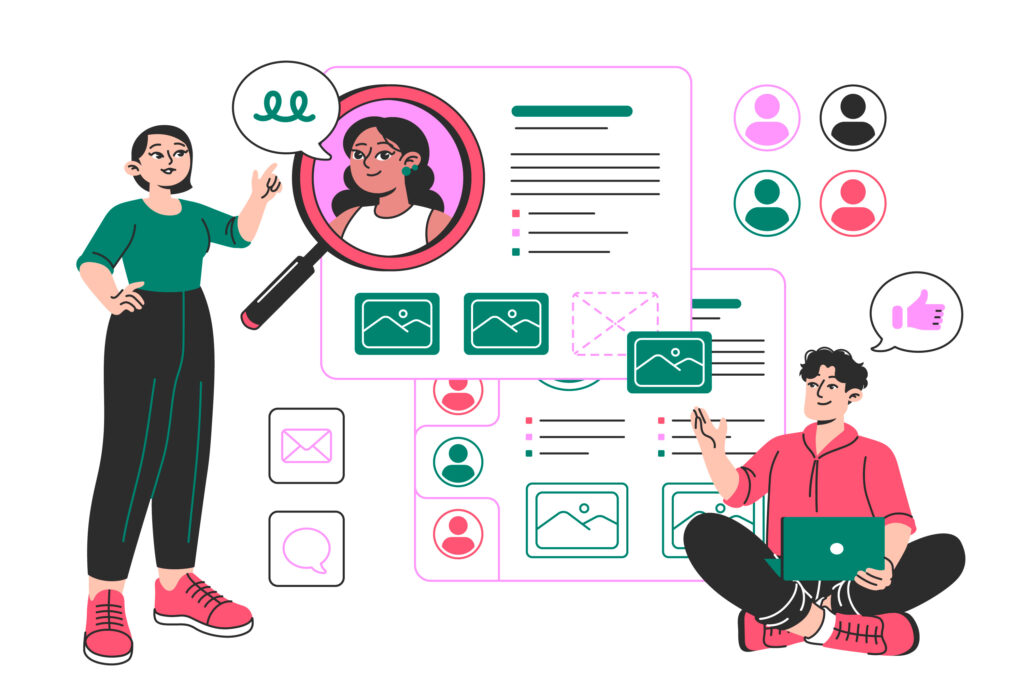You’ve just hired a candidate with an impressive resume, excellent technical skills, and a stellar interview performance. But just a few months into their role, they leave the company, feeling disconnected and out of sync with the team.
This scenario is not uncommon and highlights a significant shortcoming in conventional hiring practices. Many organizations focus solely on technical skills and qualifications, overlooking the crucial aspect of personality and cultural fit.

Let us explore the concept of personality profiling, a transformative approach that goes beyond assessing what candidates can do and delves into who they truly are. In today’s dynamic job market, understanding a candidate’s personality traits, such as their adaptability, communication style, and emotional intelligence, can be the difference between a successful hire and a costly mismatch.
In this blog, we’ll dive deep into the concept of personality profiling and its pivotal role in modern HR recruitment. We’ll explore how personality assessments can enhance team cohesion, reduce turnover, and predict job performance more accurately than traditional methods. We’ll also highlight how innovative platforms like PerspectAI are revolutionizing the hiring process with their game-based assessments. These tools provide an engaging and comprehensive way to evaluate both technical and interpersonal skills, offering a clearer picture of how candidates will fit within your organization.
By the end of this blog, you’ll understand why integrating personality profiling into your recruitment strategy is not just beneficial but essential. You’ll gain insights into how to leverage these assessments to make more informed hiring decisions, ensuring that your next recruit is not only skilled but also the perfect cultural and interpersonal fit for your team.
What is Personality Profiling?
Personality profiling is a sophisticated assessment technique designed to evaluate an individual’s behavioural traits, emotional tendencies, and interpersonal style. Unlike traditional hiring methods that focus predominantly on skills and experience, personality profiling provides a comprehensive view of how a candidate’s innate qualities align with the demands of a role and the culture of an organization.
Defining Personality Profiling
Personality profiling involves the use of various psychological tools to identify and understand individual differences in personality traits. These assessments are aimed at uncovering attributes such as emotional intelligence, motivation, values, and behavioural tendencies. By understanding these aspects, employers can better predict how well a candidate will fit within a team and perform in their role.
Common Tools and Methods Used in Personality Assessments
Several established tools and methods are used in personality profiling to ensure accurate and reliable results. Here are some of the most commonly employed:
| Tool/Method | Description | Example |
| Big Five Personality Traits | Assesses individuals based on five major dimensions: openness, conscientiousness, extraversion, agreeableness, and neuroticism. This model is widely accepted for its empirical support and predictive validity. | Evaluating a candidate’s conscientiousness to predict their reliability and attention to detail. |
| DISC Assessment | Focuses on four main personality traits: Dominance, Influence, Steadiness, and Conscientiousness. It helps to understand how individuals approach tasks, interact with others, and manage change. | Understanding a candidate’s “Dominance” to gauge their leadership and decision-making style. |
| Hogan Personality Inventory (HPI) | Designed to assess normal personality traits that predict job performance and career success, focusing on interpersonal skills and behaviour under normal working conditions. | Using HPI to predict a candidate’s potential for success in client-facing roles. |
The Role of Personality in Predicting Job Success
Personality plays a crucial role in predicting job success by providing insights into how candidates will perform and interact within their roles and teams. Here’s how:
- Job Fit and Satisfaction: Research indicates that employees whose personalities align with their job roles and organizational culture are more likely to experience job satisfaction and stay longer with the company. According to a study by Gallup, employees who are a good fit with their role are 6 times more likely to be engaged at work.
- Performance Prediction: Personality traits can significantly predict job performance. For instance, high conscientiousness, a trait characterized by reliability and diligence, is strongly correlated with higher job performance across various roles . Similarly, traits like emotional stability and agreeableness can influence how well employees handle stress and collaborate with others.
- Team Dynamics and Leadership: Effective teamwork and leadership are often driven by interpersonal skills and personality traits. A study by the Harvard Business Review found that teams with diverse personality profiles—combining traits like openness and conscientiousness—tend to perform better and innovate more effectively.
- Turnover Reduction: Employees whose personalities align with the company culture are less likely to leave.
Research published in the Journal of Applied Psychology found that using personality assessments in hiring can lead to a 20% increase in job performance
How Would Personality Profiling Help Your Teams?
- Enhanced Cultural Fit
- Aligns candidates’ personalities with the company’s values and culture, leading to smoother integration and better team cohesion.
- Improved Job Performance
- Identifies traits such as conscientiousness and emotional stability, which are predictive of higher job performance and success.
- Reduced Employee Turnover
- Helps in selecting candidates who are more likely to stay long-term, thus reducing the costs associated with high turnover rates.
- Better Team Dynamics
- Facilitates the creation of well-balanced teams by understanding how different personalities interact, leading to more effective collaboration and innovation.
- Informed Hiring Decisions
- Provides a comprehensive view of candidates beyond their technical skills, allowing for more accurate predictions of job suitability and potential.
- Enhanced Leadership Selection
- Assists in identifying individuals with traits suited for leadership roles, such as decision-making ability, resilience, and interpersonal skills.
- Faster Onboarding and Integration
- Reduces the time needed for new hires to adapt and become productive by ensuring they fit well with the team and organizational environment from the start.
- Reduced Hiring Costs
- Minimizes the risk of hiring mismatches, leading to cost savings on recruitment, training, and potential turnover-related expenses.
- Improved Employee Engagement
- Increases job satisfaction and engagement by placing individuals in roles that match their personality traits and strengths, leading to higher motivation and productivity.
- Data-Driven Insights
- Offers actionable insights through standardized assessments, leading to more objective and consistent hiring practices.
- Long-Term Organizational Success
- Contributes to building a strong, cohesive workforce that drives overall organizational performance and growth.
Overcoming Challenges with Personality Testing
Common Misconceptions: Personality profiling is often misunderstood and surrounded by myths.
- One common misconception is that these assessments are biased or lack accuracy. In reality, well-designed personality tests are based on robust psychological research and are validated for reliability.
- Concerns about bias can be mitigated by using scientifically validated tools and ensuring diverse representation in the development of these assessments.
- Additionally, personality profiling should be used as one of several tools in the hiring process, rather than the sole determinant.
Handling Results: Interpreting personality assessment results requires careful consideration. These results should be used to complement other evaluation methods, such as skills tests and interviews, rather than replacing them. It’s essential to view personality profiles as part of a broader picture of a candidate’s suitability. HR professionals should focus on how the personality traits align with job requirements and team dynamics, rather than making decisions based solely on the results. Effective integration of personality profiling into the hiring process involves using insights to enhance understanding and make more informed decisions, rather than letting them dictate the outcome.
Combining Personality Profiling with Other Assessment Methods
Holistic Approach: To make well-rounded hiring decisions, integrate personality profiling with other assessment methods like skills tests and structured interviews. Personality assessments provide valuable insights into a candidate’s behavior and fit within the team, while skills tests evaluate technical capabilities, and structured interviews assess practical experience and problem-solving skills. By combining these methods, you gain a comprehensive view of a candidate’s suitability, leading to more informed and balanced hiring decisions.

Creating a Balanced Profile: Leverage personality profiling alongside other data sources to build a complete candidate profile. Use insights from personality assessments to understand how a candidate’s traits align with the role and company culture. Complement this with skills test results and interview feedback to ensure that you’re considering all relevant aspects of a candidate’s qualifications and potential.
Platforms like PerspectAI offer an integrated approach, combining game-based personality assessments with technical evaluations to provide a holistic view of each candidate.